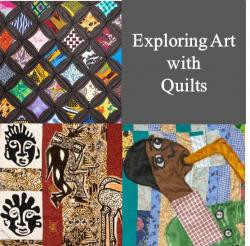Celine Romano's collections
50 Ways to Look at a Big Mac Box
<p>When you work in museums, you learn that almost anything can tell you a story. You just need to know the right questions to ask! <br /></p>
<p>Based on John Hennigar Shuh's essay "Teaching Yourself to Teach with Objects," this is an activity that takes a familiar object - a Big Mac box - and places it in an unexpected context - museum collections. The practical observation activity is then followed with a comparison with Big Mac boxes from the National Museum of American History and a discussion about why they are included in the Smithsonian Institution.</p>
<p>This collection is designed to help teachers and students learn how to look at museum objects through guided observation. It is intended to expand your understanding of material culture and develop transferrable skills to carry out any object observation!<br /></p>
<p>The aim of this activity is also to become more familiar with the kind of work done by conservators and curators in museums, and how they use objects to understand history. Like detectives looking for clues, conservators can focus on the technical details to learn how an object was made or how it was used. Curators can use object observation, interviews and archival research to look for the bigger picture and learn how the object can tell a story about society. Communicating these professions to young children through practical activities is a good way to make big institutions more approachable. </p>
<p>This exercise works best if you bring a Big Mac box into the classroom: you will be doing work similar to what is done in museums and you can use all five senses to carry out the observation. If you can't get a hold of a Big Mac box, any food container will do! Some examples could be a box of pasta or a can of beans. Adapt the questions to suit the object and make your own object observation pathway!<br /><br /></p>
<p>#MuseumFromHome<br /></p>
 Celine Romano
Celine Romano
6
Exploring Art with Quilts at the Anacostia Community Museum
<p>This collection of quilts offers material to challenge conventional definitions of art and artists, explore the many different ways to tell a visual story and spark discussions about the traditions that are passed down in families. This resource is structured around 2 hour-long lessons in art analysis, a creative task and a reflection session. </p>
<p>A range of styles and traditions are represented here, as each quilt and quilter has their own story to tell. The story can be evident in the visual content of the quilt, but the context in which it was created can be equally important. Quilting is an art form taught between generations and amongst friends, bridging the gap between material culture and intangible heritage. <br /><br />By encouraging young learners to look closely and develop evidence-based arguments, we can hope to build their skills to think deeply about the interrelationship of art, memory and community. <br /><br />Enclosed in the Teacher's Resource is a list of quilts, short biographies of the artists and potential discussion questions. Also included are suggested art and craft activities, and an annotated bibliography for educators who want to do more research on the topic. <br /><br />Goals:</p>
<ul><li>How can we express things that are important to us?</li><li>How can quilts teach us about community?</li></ul><p>Objectives:<br /></p>
<ul><li>Challenge and expand definitions of “art” and “artist.”</li><li>Develop a toolkit for visual analysis.</li><li>Understand different forms of creative self-expression.</li><li>Learn about traditions we share in our communities and pass between generations.</li><li>Empower students’ creativity.</li></ul>
 Celine Romano
Celine Romano
14
The Ontario Lakers: Teamwork in Urban Environments
<p>Did you know that Washington, DC had their very own Lakers? No, not <em>those </em>Lakers.
</p>
<p>The Ontario Lakers were a community sports team based in the Adams Morgan neighborhood of Washington, DC. This collection aims to get kids thinking about teamwork and how outdoor environments can be designed to make a place for community. Discover more about the Ontario Lakers in the sources and suggested activities below.</p>
<p>Included here is a photograph of the Ontario Lakers playing ground, a baseball signed by the team and interviews with Mary and Ronald Pierce (sister and brother to Walter Pierce, the leader of the Ontario Lakers). The sources are from the Anacostia Community Museum and the National Museum of African American History and Culture.<br /><br /></p>
<ul><li>Study the <strong>museum sources</strong> to learn about the Ontario Lakers.</li><li><strong>"What's the Story"</strong> encourages students to think about the big ideas represented in the sources by analysing a sample news article and answering comprehension questions using the Harvard Project Zero thinking routines.<ul><li><strong>Extension task</strong>: Write an article for the your student newspaper about a team (eg. sports team, scout troop, gardening group) in your city or neighborhood or city. Does this team make your neighborhood a better place? Why? In what ways?</li></ul></li><li>The <strong>"5W and 1 H"</strong> activity is a guided reflection on the social and emotional benefits of being part of a team.</li><li>By taking a walk <strong>"In Your Community,"</strong> students can discover the continued relevance of the situations faced by the Ontario Lakers: how urban communities inhabit outdoor places and how common resources can build community.</li><li>These ideas are put into action with the <strong>"Plan a Park"</strong> activity, as students are empowered make decistions that transform their neighborhood. </li></ul><p><br /></p>
<p>#MuseumFromHome #ChildrenAsCitizens #UrbanPlanning #Environment #Baseball<br /></p>
 Celine Romano
Celine Romano
12


